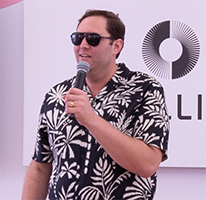The economic slowdown proved to be the best and worst of times for marketing research companies.
Although advertising and promotion budgets were reduced considerably in 2001, the pressure to invest remaining dollars more efficiently sparked a 1.0 percent increase in spending on promotion-related research to $1.47 billion, according to PROMO estimates based on industry sources.
“As the economy started to slow, there was a real push for brand marketers to have measurable score cards of their performance,” says John Porter, vp-solution principals, brand management for ACNielsen, Schaumburg, IL. “I’m seeing people stay very committed to research, specifically research that helps them understand the consumer.”
Determining the effectiveness of campaigns becomes more important in periods of economic softness, says Patrick McGraw, executive vp-analytic product development at Chicago-based Information Resources, Inc. (IRI). There has been a “relentless focus on ROI by CPG marketers,” he adds.
Most CPGs want to evaluate marketing mixes and pricing strategies, measure past performance, and forecast future results, McGraw says. Plus, “manufacturers want to turn this information into action more quickly than ever before.”
Research clients are also interested in determining the types of consumers that respond to different promotions so they can target programs more effectively. For a major client in the health and beauty aids industry, ACNielsen determined which marketing elements were most effective by ascertaining the types of consumers who responded, the number of incremental cases sold in each promotion, and the ROI of each campaign, Porter says.
ACNielsen also helped the client identify ways to improve ROI by selling more incremental cases for the same investment or by selling the same number of cases with a reduced investment.
Studying Retailers
Marketers are also looking for information that will help establish better relationships with retailers.
ACNielsen provides information on the ways retailers define different product categories to help manufacturers communicate more intelligently, Porter says. Manufacturers that can present retailers with insights into consumer purchasing habits are in demand, he adds.
The firm maintains two ongoing databases for promotion-related research. The first tracks purchases in 55,000 households with in-home scanners. The second tracks weekly promotion activity at food, drug, mass, and convenience stores.
Bentonville, AR-based Wal-Mart caused the biggest commotion of 2001 when it decided last summer to stop supplying its scanner data to third-party research firms.
The company’s reasoning: Since it already provided the information directly to manufacturers and other parties, its cooperation with third-party services was only of benefit to competitors.
Both IRI and Nielsen have been plugging the Wal-Mart hole — which represents at least 25 percent of food sales at any given time — with information gleaned from their proprietary consumer panels.
Online Tracking Climbs
Internet-based data collection jumped 51 percent to $333.5 million in 2001, according to Inside Research, Barrington, IL. That should grow another 47 percent to $489 million in 2002, says publisher Jack Honomichl. At present, only five percent of online spending is allocated for research efforts; the rest reflects a migration in spending from traditional research.
Research houses (including ACNielsen sister Spectra, Chicago) and media buyers are developing systems that merge household purchase data with TV ratings to provide advertisers with targeted plans that can go deeper than standard demographic viewership profiles.
Web Building
Online research spending
1996: $2.6 million
1997: $10.6 million
1998: $27.7 million
1999: $92.7 million
2000: $221.5 million
2001: $333.5 million
2002: $488.9 million (projected)
Source: Inside Research
SNAPSHOT
- Promotion-related research spending rose 1.0 percent.
- CPG makers focused on evaluating the marketing mix, pricing strategies, and consumer responsiveness.
- Research activity continues to migrate to the Web.
 Network
Network

